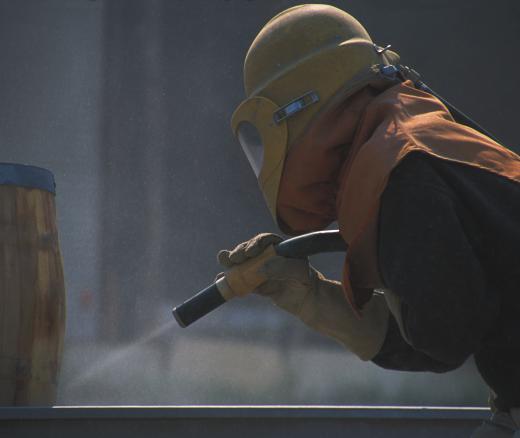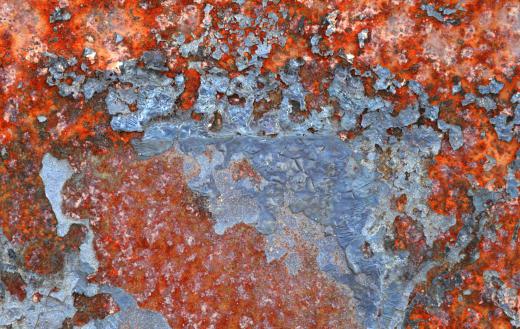Sandblasters are devices that use sand, or a similar substance, to prepare a surface for refinishing. The sand is usually propelled from a special nozzle, often referred to as a sandblasting gun, by pressure. Three main types of sandblasters include gravity fed, siphon, and pressure blasters. They can also vary in size, from very small to very large, for every type of job.
Gravity fed sandblasters, as their name suggests, work because of gravity. Sand is placed into a small container, sometimes called a hopper, that is mounted on top of the gun. The gun is then hooked to an air compressor. When the trigger is pressed and the air blasts out of the nozzle, sand falls from the container and is blasted out of the nozzle.
A siphon sandblaster works in a similar manner. The container that holds the sand, however, is below the nozzle instead of above it. When the air is released, it sucks the sand out of the nozzle.

Pressure sandblasters require canisters of sand that are pressurized. Sandblasting guns are hooked to these canisters, and sand is blasted out of the container when the trigger on the gun is pulled. Although much easier than other types of blasters, these can be more expensive, since the sand can not be reused and new canisters must be purchased when the old ones are empty.

Mini sandblasters are typically made to be very easily moved. These portable sandblasters can be used in very tight spaces and for detail work. For example, a hand-held sandblaster can be used underneath a car to remove any rust or old paint before refinishing. Smaller sandblasters are also sometimes used to etch detailed designs into glass.
A larger sandblaster may need to be mounted to something to stabilize it. These can be mounted to a bench or inside a cabinet. When mounted to a wheeled cart, however, they can be portable. These sandblasters can be used to removed old paint from the side of a house before repainting. Automotive sandblasters can be used to removed paint and rust from the body of a car or other vehicle before repainting.
Much larger industrial sandblasters may need to be mounted on to large trucks. These are often used for very large outside jobs. Paint and rust can be removed from very large buildings or water towers using these types of sandblasters.
When using a sandblaster, protective clothing should be worn. Eye protection, like goggles, is one of the most important things to remember when sandblasting. Sand, or other types of sandblasting media, could get into a person's eye while working and scratch the sensitive tissue on the surface of the eyeball. Other protective gear can include respirators and gloves.
